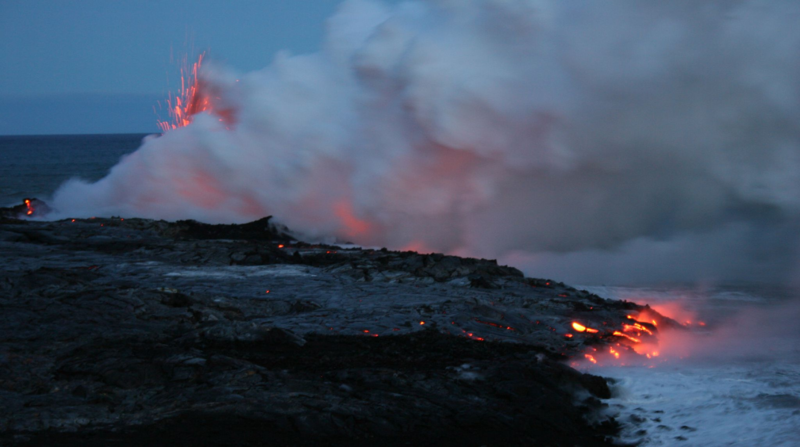
Volcanoes spewing Sun-reflecting particles into the atmosphere have partly offset the effects of Man’s carbon emissions over a 15-year period that has become a global-warming battleground, researchers said Sunday.
A so-called hiatus in warming since 1998 has pitched climate sceptics against mainstream scientists.
While temperatures have risen relentlessly—13 of the l4 warmest years on record occurred since the start of the century—they tracked far below the increase in man-made greenhouse gases.
This gap between the expected and actual temperatures has been cited by sceptics as proof that human-induced global warming is either a green scare or bad science.
But a study in the journal Nature Geoscience said volcanic eruptions helped explain the apparent warming slowdown.
Researchers using satellite data found a link between surface temperatures and the impact from nearly 20 volcanic eruptions since 2000.
Sulphuric droplets disgorged by the volcanoes reflected sunlight and slightly cool the lower atmosphere, they said.
The effect of these “aerosols” accounted for as much as 15 percent of the gap between expected and measured temperatures between 1998 and 2012, according to the team’s figures.
“The ‘warming hiatus’ since 1998 has a number of different causes,” study co-author Ben Santer of the Lawrence Livermore National Laboratory in California told AFP by email.
“The cooling caused by early 21st century volcanic eruptions is one of the causes.”
Other explanations for the “hiatus” have been a bigger-than-expected takeup of atmospheric heat by the ocean, or a decline in solar activity.
Blockbuster eruptions, notably that of Mount Pinatubo in the Philippines in 1991, were known to have discernible cooling effects on Earth’s surface.
But volcanoes have not featured in the “hiatus” debate mainly because there had been no major eruptions since the mooted pause began in 1998, only smaller ones whose impact is harder to measure.
– Better models needed –
This is a gap, as it left computer models of climate change incomplete, the new study suggested.
“Better observations of eruption-specific properties of volcanic aerosols are needed, as well as improved representation of these… in climate model simulations,” it said.
Global warming sceptics have pointed to the “hiatus” as proof of flaws in models used to predict warming and thus play a key role in driving policies to tackle climate change.
They contend that these models exaggerate the heat-trapping effect from carbon dioxide (CO2) emitted by fossil fuel burning.
Santer said the new findings “do not support” such an argument.
“We’ve been lucky that a natural cooling influence (an uptick in 21st century volcanic activity) has partly counteracted human-caused warming,” he said.
“We do not know how volcanic activity will evolve over the coming decades, and thus we do not know how long our luck will continue.”
Experts generally agree that Earth is on track for greatly exceeding the maximum two degrees Celsius (3.6 degrees Fahrenheit) of warming targeted in UN climate negotiations.
Last year the level of carbon dioxide (CO2) in the atmosphere crossed a threshold of 400 parts per million (ppm)—a level never experienced by humans.
CO2 concentrations are rising at two or three ppm per year, driven especially by the burning of coal in emerging economies.
Commenting on the study, Piers Forster, a professor of climate change at the University of Leeds, said it confirmed that volcanoes contributed to the slowdown, but could not be the only cause.
“Volcanoes give us only a temporary respite from the relentless warming pressure of continued increases in CO2,” he added.
Note : The above story is based on materials provided by © 2014 AFP










